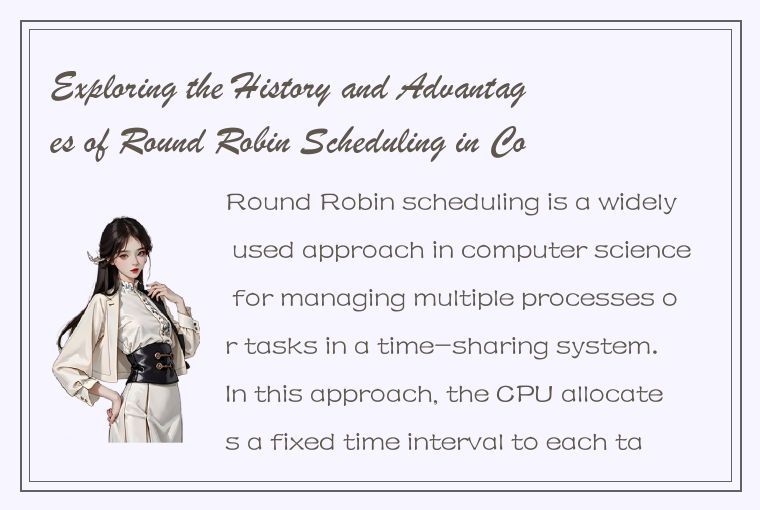Round Robin scheduling is a widely used approach in computer science for managing multiple processes or tasks in a time-sharing system. In this approach, the CPU allocates a fixed time interval to each task or process, ensuring that every process gets a fair share of CPU time. This type of scheduling algorithm has a long and rich history in computer science, and it has been used in a variety of systems, including operating systems, network devices, and web servers. In this article, we will explore the history of round-robin scheduling, how it works, and its advantages.

The History of Round Robin Scheduling
Round Robin scheduling was first introduced in the late 1950s, when the first time-sharing systems were developed. During this time period, computer systems were large and expensive, and only a few users could access them at once. Time-sharing systems were created to allow multiple users to share the computing resources of a single computer, enabling them to work on different tasks simultaneously.
The earliest time-sharing systems used first-come, first-serve scheduling algorithms, which caused problems when users with long-running jobs took up a significant amount of CPU time, leaving other users waiting for their turn. To address this problem, round-robin scheduling was developed, which allocated a time slice to each process, allowing each process to receive a fair share of the CPU.
The first implementation of round-robin scheduling was done in the Compatible Time-Sharing System (CTSS), developed at MIT in the early 1960s. CTSS was a pioneering time-sharing operating system used on the IBM 7090 and IBM 7094 computers, and it allowed multiple users to interact with a computer system simultaneously. Round-robin scheduling was used in CTSS to ensure that each user received an equal amount of CPU time.
How Round Robin Scheduling Works
Round Robin scheduling works by allocating a fixed time slice, usually between 10 and 100 milliseconds, to each process in a queue, which is called the ready queue. The CPU then executes each process for a time slice, and if the process does not complete within the assigned time, it is preempted, and the CPU moves on to the next process in the queue. If a process completes its task before the time slice expires, it goes back to the end of the ready queue.
Round Robin scheduling is a preemptive scheduling algorithm, which means that at any given moment, the CPU can be taken away from a running process and given to another process. This allows the CPU to handle time-sensitive tasks, such as real-time applications or multimedia, without being monopolized by a single long-running process.
Advantages of Round Robin Scheduling
Round Robin scheduling has several advantages, including:
1. Fairness: Round Robin scheduling ensures that each process receives a fair share of the CPU time. This is particularly important in time-sharing systems, where multiple users are competing for limited resources.
2. Responsiveness: Round Robin scheduling ensures that processes get a time slice frequently, which helps to improve the responsiveness of the system. This is particularly important in interactive applications, such as desktop applications or web servers.
3. Preemption: Round Robin scheduling allows for preemption, which means that long-running processes cannot monopolize the CPU. This is particularly important in real-time applications, where timely execution is critical.
4. Simple Implementation: Round Robin scheduling is easy to implement and does not require complex algorithms or advanced hardware.
Conclusion
Round Robin scheduling is a widely used scheduling algorithm in computer science, particularly in time-sharing systems. It is a fair, responsive, and preemptive algorithm that ensures that all processes get a fair share of the CPU time. The history of round-robin scheduling is long and rich, with the first implementation being done in the Compatible Time-Sharing System (CTSS) in the early 1960s. Today, round-robin scheduling remains a popular algorithm in operating systems, network devices, and web servers, and it has played an important role in the development of computer science.




 QQ客服专员
QQ客服专员 电话客服专员
电话客服专员